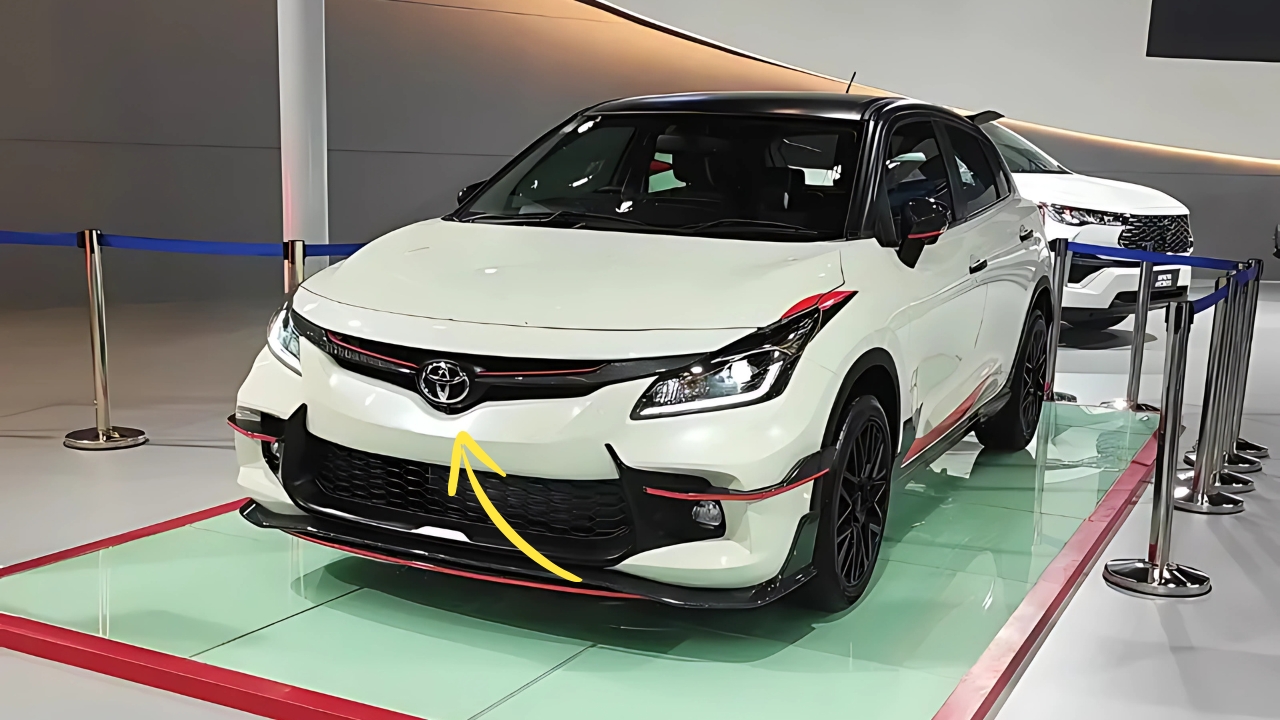Toyota Glanza: The evolving dynamics of global automotive partnerships have created increasingly complex product strategies, with traditional competitors now frequently sharing platforms, powertrains, and even complete vehicles.
The Toyota Glanza represents one of the more interesting outcomes of this shifting landscape – a rebadged Maruti Suzuki Baleno that attempts to merge Toyota’s ownership reputation with Suzuki’s small car expertise.
Having recently spent a week with the refreshed model during a family visit to Hyderabad, I’ve developed distinct impressions about where this cross-badged hatchback succeeds and where its derivative nature creates inevitable limitations.
Toyota Glanza: Strategic Context: Understanding the Collaboration
To properly evaluate the Glanza, one must first understand the strategic importance of the Toyota-Suzuki partnership within the Indian market context.
As emission regulations and electrification demands create mounting development costs, these former competitors have embraced collaboration to maintain competitive positioning across diverse segments without duplicating investment in platforms with limited global volumes.
For Toyota, whose Indian lineup historically emphasized mid-size sedans and SUVs, the partnership provides immediate access to the volume-driving small car segments where Maruti Suzuki’s economies of scale create significant advantages.
The Glanza specifically targets urban professionals and smaller families seeking Toyota’s ownership experience without stretching to Innova or Fortuner price points – a demographic previously underserved by Toyota’s limited small car offerings.
Design Differentiation: Subtle Distinction
The Glanza’s exterior design demonstrates the minimal differentiation typical of cross-badged vehicles. The front fascia adopts Toyota’s corporate design language through a revised grille pattern and bumper styling, while the remaining body panels maintain identical Baleno stampings.
LED projector headlamps and 16-inch alloy wheels on the higher G variant I tested create contemporary visual elements that align with class expectations.
During my time with the vehicle in Hyderabad, several acquaintances failed to immediately recognize the Toyota connection until spotting the badges – testament to both the limited differentiation and the Baleno’s established visual presence in the Indian market.
This visual similarity creates an interesting marketing challenge, requiring Toyota to emphasize ownership benefits rather than distinctive design as the primary purchase motivation.
What impresses most about the execution is not the limited differentiation but rather Toyota’s confidence in embracing the partnership without excessive cosmetic alterations that might increase cost without adding substantive value.
This pragmatic approach acknowledges that authentic engineering substance matters more than superficial distinction.
Cabin Experience: Familiar Quality
Step inside the Glanza, and the Baleno origins remain immediately apparent through identical dashboard architecture, switchgear, and trim elements.
The black interior with silver accents creates a contemporary if somewhat conservative aesthetic, while material quality demonstrates typical Maruti attention to perceived value rather than absolute premium execution.
Seating comfort exceeds what exterior dimensions might suggest, with supportive front buckets and a rear bench that accommodates two adults comfortably with adequate headroom and legroom.
The flat rear floor enhances center position usability when necessary, though three adults would find shoulder room limited during longer journeys.
During family driving around Hyderabad, the cabin proved adequately spacious for four adults without complaints, even during a longer highway excursion to Warangal.
The 9-inch Smartplay Pro+ infotainment system offers wireless Apple CarPlay and Android Auto connectivity, responsive touch inputs, and reasonably intuitive menu structures.
Sound quality from the six-speaker Arkamys system exceeds segment expectations, delivering clear vocal reproduction and adequate bass response without distortion at higher volumes.
Climate control effectiveness proved impressive even in Hyderabad’s notorious heat, cooling the cabin quickly and maintaining comfortable temperatures throughout extended urban driving.
Storage solutions demonstrate practical consideration of typical usage patterns, with adequately sized door pockets, a reasonably spacious glove compartment, and thoughtfully positioned smartphone shelves.
The 318-liter boot accommodated our family luggage without complaint, though the high loading lip required more effort when placing heavier items.
Driving Dynamics: Refined Competence
The Glanza shares its mechanical package with the Baleno, featuring a 1.2-liter naturally aspirated four-cylinder producing 89 horsepower and 113 Nm of torque.
This powerplant balances adequate performance with excellent efficiency, delivering smooth, linear power delivery that proves perfectly matched to urban and light highway usage.
The five-speed manual transmission in my test vehicle offered precise shifts with light clutch action well-suited to congested traffic conditions.
Ride quality demonstrates sophisticated damping characteristics that absorb urban road imperfections effectively while maintaining composure during higher-speed directional changes.
The suspension tuning strikes an appropriate balance between comfort and control, with progressive body movements that communicate limits without feeling disconnected.
This refinement particularly impressed during longer highway stretches, where the vehicle maintained stable tracking even at triple-digit speeds.
Steering response prioritizes ease in urban environments with light effort at parking speeds, progressive weighting as velocity increases, and reasonable precision when placing the car during cornering.
While not offering sports-car feedback, the calibration perfectly suits the vehicle’s intended usage patterns and target demographic.
Fuel efficiency represents a particular strength, with my mixed-condition testing consistently returning 18-19 km/l despite air conditioning use in warm conditions.
This economic operation significantly enhances ownership value, particularly for budget-conscious buyers in times of fluctuating fuel prices.
Ownership Proposition: The Toyota Advantage
Where the Glanza creates meaningful differentiation from its Maruti sibling comes through Toyota’s ownership package rather than product-specific attributes.
The standard 3-year/100,000-kilometer warranty exceeds Maruti’s 2-year coverage, while Toyota’s service reputation for quality and transparency creates subjective ownership confidence that many buyers value.
The dealership experience further differentiates the ownership proposition, with Toyota’s generally larger, more premium facilities and different customer handling processes creating a distinct purchasing and service environment.
During conversations with fellow owners during my Hyderabad visit, this aspect frequently emerged as a primary purchase motivation despite the identical mechanical package.
Resale value expectations represent another significant ownership advantage, with Toyota products historically demonstrating stronger value retention in the Indian market.
Though the Glanza lacks sufficient market history for definitive residual analysis, the Toyota badge typically commands premium in the used market that partially offsets the marginally higher initial acquisition cost compared to the Baleno.
Toyota Glanza: Pragmatic Partnership
The Toyota Glanza ultimately succeeds by embracing its collaborative nature rather than attempting to disguise its origins.
nstead of extensive cosmetic differentiation or marketing-driven distinctions, Toyota has focused on enhancing the ownership experience around a proven product – a pragmatic approach that delivers meaningful consumer benefits without unnecessary complexity or cost.
For buyers prioritizing Toyota’s ownership reputation but requiring a vehicle in this segment, the Glanza offers a compelling proposition that leverages the strengths of both manufacturing partners.
In acknowledging that authentic engineering substance matters more than superficial distinction, Toyota has created a cross-badged vehicle that transcends the often-compromised execution typical of such arrangement

